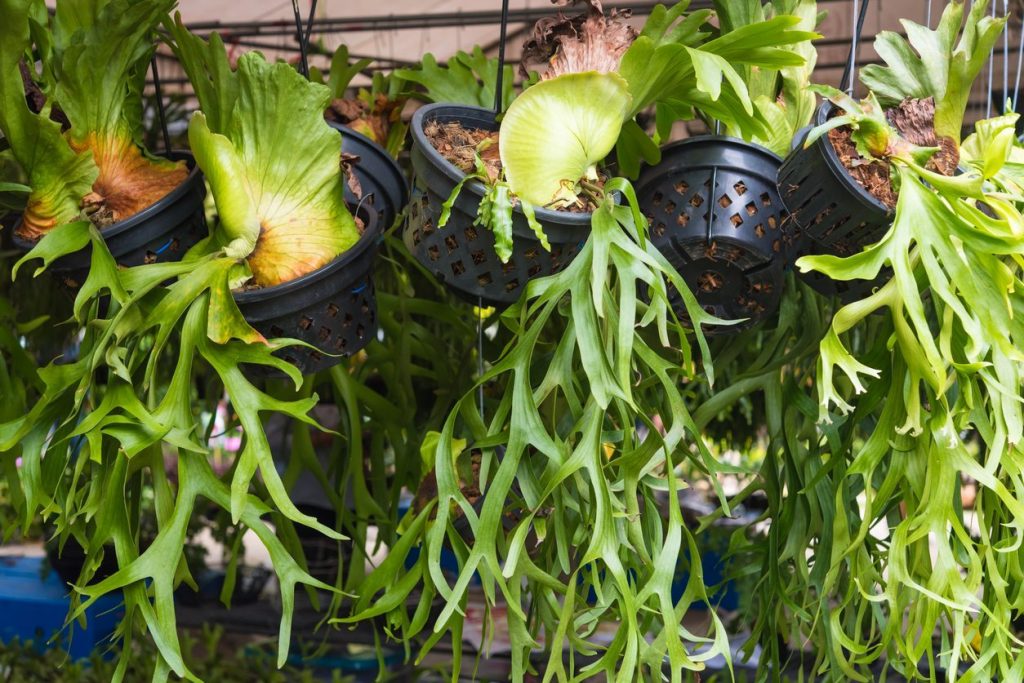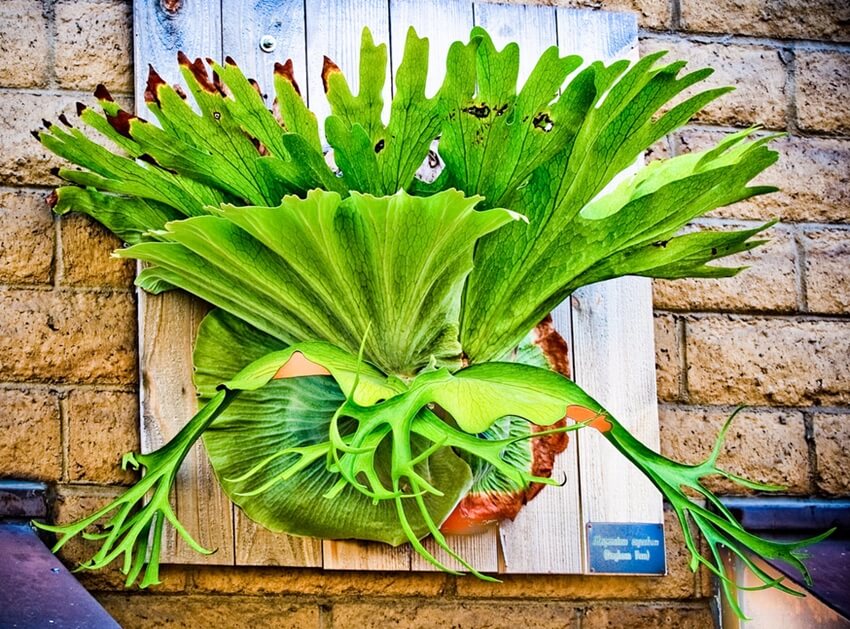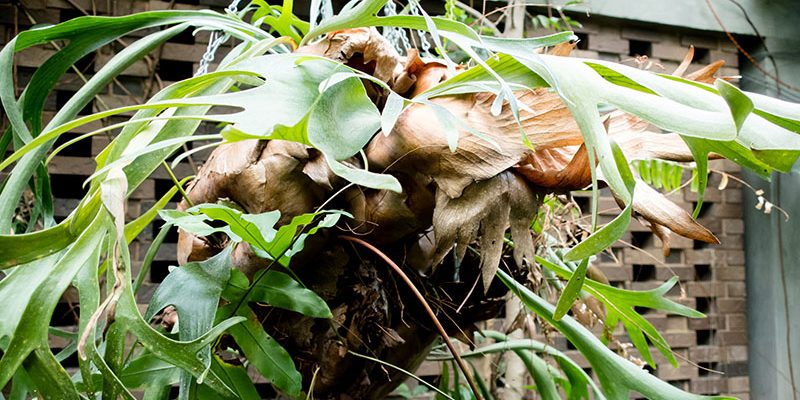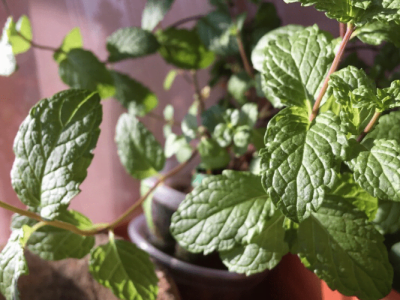The Staghorn fern is a surprising and different type of plant that is both an air plant and a fern. It somehow shows a resemblance to a fern. Typically, the plant grows on tree trunks or rocks when it is in its natural environment. It takes the energy from plants, soaks up moisture from the air, and gathers nutrients from the leaves of the present trees.
The Staghorn plant can also be grown in the house or gardens. It needs the appropriate mild temperature to grow. The plant mainly needs the right conditions, the right temperature, and the right climate to grow in a garden. This houseplant is somehow different from the others and can be considered as both greenery and art to our house. So, if you want your house full of these staghorn ferns, you have come to the right place.
Advantages of Staghorn Ferns

Staghorn ferns’ first and foremost advantage is that this plant’s leaves are essential and healthy to purify the air in our home. Another good thing about this plant is that they grow vertically on the wall, taking less space and covering the wall as wall art.
The plant is not toxic to animals and humans, so there is nothing to worry about if you have a pet animal. Also, they are not prone to any disease. Furthermore, the plant grows slowly and steadily and can grow up to 6 feet in three to five years.
Staghorn fern plants are easy to take care of and require a minimum amount of sunlight, air, humidity, and water to grow. Only four to six hours of sunlight is needed per day, direct or indirect, and the plants’ watering can be done once a week, and that will be enough to grow the plants.
Another positive point is that the plant’s growth rate depends on the species but somewhere takes three to five years to grow up to six feet.
How to Take Care of Staghorn Ferns?

The Staghorn fern needs to be taken extra care of. As it is mostly grown inside the house, it somewhat needs extra care and protection to grow. Once you learn to care for this plant, it is fundamental to take care inside or outside in the garden. The caring of staghorn ferns is similar to that of air plants.
Water
When it comes to watering the plant, you will first understand the plant requirements and type. The staghorn fern has two types of leaves, fertile and sterile. The sterile leaves are the most important for the ferns because they feed the plant and protects them. The sterile leaves absorb the water, light, air, humidity, and nutrients to provide the ferns a healthy routine to grow and protect themselves.
Another thing is that the staghorn fern needs more water than any other plant. This is because the staghorn fern soaks the water very quickly. It can soak bucket water in less than five minutes. This is why more water is needed for watering the staghorn ferns.
Once you are done with watering the plant thoroughly, you can rest for up to next week. This plant does not need watering regularly. Watering is required every week but in a considerable amount.
The Sterile leaves also absorb the moisture. This is why the ferns need sterile leaves to soak a considerable amount of water for their growth, as most of the water. These sterile leaves are the main reason for the growth of the ferns of staghorn plants.
Light
Staghorn Plants’ roots come from thick forests where they grow on the tree trunks or on the rocks where they get indirect sunlight for their growth and direct sunlight for a few hours. This does not affect the growth of the staghorn ferns.
So, when you are growing the staghorn plant inside your house, you will be required to provide indirect sunlight and direct sunlight in fair proportions. They must be kept in partial shade so that they do not get enough direct light.
If you wish to plant these staghorn ferns in the garden, keep them in the shade instead of absorbing more than needed heat and moisture. Otherwise, the pure leaves will get damaged, and as a result, it will damage the whole plant.
Humidity
Another thing that you need to care about is humidity. When the plant grows in thick rainforest, they get the right amount of sunlight, rain, air, water, humidity, and temperature. Once you bring these plants from their home trying to get them settled in your house, you will be required to provide the correct set of conditions to let them grow.
The most unique and easy way to increase the humidity among plants inside a house is to water them regularly to soak most of the water. The remaining water will cause enough humidity to the plant that they can grow.
If you plan to plant these staghorn ferns in a pot, make sure to use a pebble tray filled with water so that the water that will be absorbed will help create humidity inside the plant.
Another way to increase humidity is to use an electric humidifier. However, it will be best to let the plants grow in natural conditions without providing them any other external supplies.
Feeding
The most critical parameter in the growth of staghorn ferns is the proper feeding. It is an essential part that helps the ferns to grow better. When staghorn ferns are grown in their natural area on a tree trunk or rocks, the lowest part of the plant called fallen leave, decomposes to release nutrients that help the plant absorb them.
However, this always happens only when the plant is grown in its natural habitat. Once you take them to your home or garden, then the fallen leaves will not release any nutrients as they will no longer be able to do that.
In this case, you will be required to provide proper feeding. Even if they are being grown in a different place, they can absorb the natural nutrients to help them in their better growth. This will need fertilizer feeding every month. You will also be required to use a diluted liquid feed to provide fertilizer to the plant to grow better directly.
Pruning
The ferns do not require pruning. Moreover, pruning the staghorn ferns is one of the ways to kill them. In general, the lower fronds, when turned brown, they often get mistaken as dead leaves and get removed. However, these fronds should remain there even if they are sagging or appear as if they are dead.
They may resemble dead parts of the plant but make sure you never remove them. Despite their appearance, they still provide rich nutrients to the plant that helps them to grow better.
The fronds can be removed, but only when removing them will not create any problem in the plant’s growth. You will eventually come to know about this once you start taking care of the staghorn ferns. When it became loosely attached to the plants, the fronds can get removed without damaging the plant.
Suppose you do not pay attention and remove the fronds. In that case, they will no longer provide moisture, heat, humidity, and nutrients to the staghorn ferns that will later stop the plant’s growth.
Propagation
Now comes the most essential and most straightforward task in the growth of staghorn ferns. Propagation of staghorn ferns is a relatively easy task and usually get accomplished if done from spores or offshoots.
The easiest method to propagate the staghorn ferns is doing it from offshoots. When the staghorn fern is matured, the offshoots grow on fertile as well as pure leaves. These offshoots can be gently removed without damaging the plant.
Suppose you are facing any problem in gently pulling them. In that case, you should take any professional help because once they start developing on the fertile and sterile leaves, you will be required to remove them as soon as possible not to affect the ferns’ growth.
If you are late in removing the offshoots from the ferns, they will slowly start killing the ferns, and then it will not matter if you provide them enough water and heat; they will die quickly.
Another way of propagation is to do them from the spores. They grow on the fertile fronds, and soon as they turn brown, you should start removing them. A straightforward way to remove them is to remove the frond itself from the parent plant. So, in this way you can take care of your staghorn ferns if you have brought them to your house or in your garden.














Comments